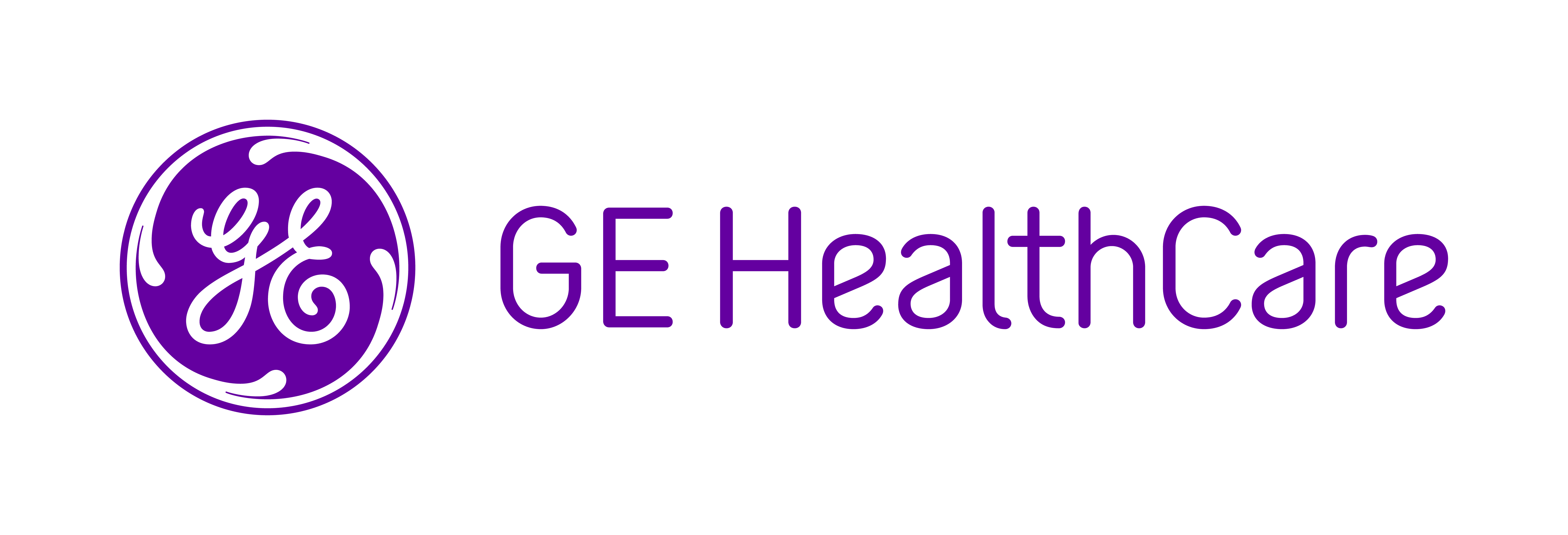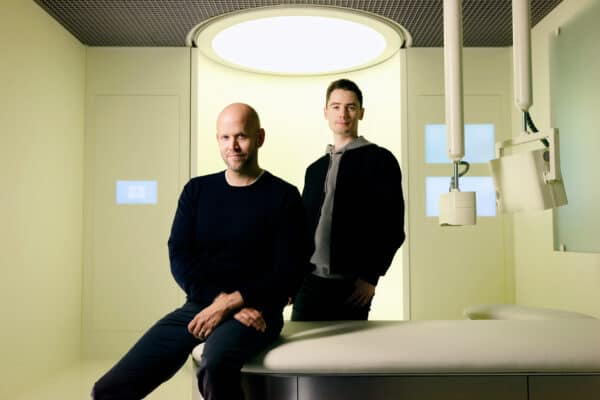|
Whole-Body Star Power | Biology-Guided Radiotherapy
February 6, 2023
|
|
|

|
|
Together with
|

|
|
|
“Radiology doesn’t have a value problem, it has a value capture problem.”
|
|
Sirona Medical CEO Cameron Andrews on why radiology will have to be able to show its impact on downstream care in order to thrive in value based care.
|
|
|
Healthcare’s shift to value-based care represents one of radiology’s greatest challenges, and will make it imperative for radiologists to demonstrate their downstream value. In the latest Imaging Wire Show, Sirona Medical’s Cameron Andrews and Reveal-Dx’s Chris Wood detail how AI and a reimagined approach to imaging IT can ensure that radiology thrives as the value-based care shift continues.
|
|

|
|
The proactive whole-body scanning segment gained even more celebrity-driven momentum last week with the launch of Neko Health, a Sweden-based startup cofounded by Spotify CEO Daniel Ek.
Neko Health launches with the goal of improving early disease detection, thus allowing physicians to focus on preventive care, and reducing late detection’s social and economic impact.
- The $190 exams combine a 360-degree body scan, cardiovascular scans, sensors, and blood tests to collect 50M data points (“skin, heart, vessels, respiration, microcirculation and more”) that are analyzed with AI to assess patients’ unique risks.
Neko Health’s cardiovascular exam includes cardiac ultrasound (among other technologies), but its other scanners are based on “cameras, lasers, and radars,” and aren’t the type of modalities that most of you associate with whole-body scanning (no MRI or CT).
- That said, Neko’s launch prompted the same type of radiologist backlash that we typically see when new whole-body imaging companies emerge, and Neko’s exams could still lead to the cascade of follow-ups that radiologists are concerned about.
Unfortunately for those concerned radiologists, the general public pays much more attention to the rich and famous than what folks are upset about on RadTwitter, and it seems that elites love proactive whole-body exams…
- Spotify’s Daniel Ek co-founded Neko (in case you missed that part)
- Whole-body MRI startup Prenuvo is backed by some A-list investors (Apple’s Tony Fadell, Google’s Eric Schmidt, supermodel Cindy Crawford)
- AI-driven proactive MRI company Ezra’s investor list is full of execs and entrepreneurs, rather than the VCs that imaging startups typically rely on
- Whole-body scans have also been endorsed by some very influential celebrities (Oprah, Kim Kardashian, Chamath Palihapitiya, Paris Hilton, Kevin Rose)
Outside of the excellent celebrity endorsement work that Hologic has done for breast cancer screening, we don’t see that type of star power in traditional areas of medical imaging.
The Takeaway
Neko Health largely steers clear of radiology’s turf from a modality perspective, but whole-body scanning’s recent influx of funding, innovations, and celebrity-driven awareness seem very relevant to radiology.
|




|
|
The Complete Guide to Radiology AI
Radiology is leading healthcare’s AI revolution, and yet many people in radiology are just starting to build their understanding of AI. That’s why Bayer published its truly Complete Guide to Artificial Intelligence in Radiology, detailing how AI can address radiology’s challenges, AI’s core use cases, and AI’s path towards adoption.
|
|
Loyola University Health Unifies and Streamlines
See how Chicago’s Loyola University Health System overcame legacy PACS and workflow constraints by adopting Intelerad’s InteleOne XE enterprise workflow solution.
|
|
- CXR Bone Suppression AI: JAMA detailed a new deep learning synthetic bone-suppressed (DLBS) model that seems to significantly improve chest X-ray lung nodule detection. After training with 998 patients’ CXRs, validation against two external datasets (246 & 205 patients) revealed that the DLBS model achieved higher sensitivity and fewer false positives than a previously-developed AI model (91.5% vs. 79.8%; 7% vs. 9%), while three radiologists performed far better with DLBS AI than without AI assistance (92.1% vs. 77.5%; 7% vs. 15%).
- RefleXion SCINTIX’s FDA Clearance: RefleXion Medical announced its FDA clearance for SCINTIX biology-guided radiotherapy, which leverages the RefleXion X1 system (combines CT imaging & linear accelerator) to deliver custom radiation levels based on “each cancer’s unique biology.” The clearance makes the RefleXion X1 the only dual-treatment modality platform for patients with any stage of solid tumors, while bringing the extremely well-funded company ($570M) deeper into the commercialization phase of its strategy.
- The Most Effective Mammography Readers: New research out of Australia found that screening mammography readers’ individual characteristics don’t have a significant impact diagnostic efficacy, but their reading volume and specialization does. Analysis of 28 studies found that high reader volume and breast imaging specialization were associated with higher cancer detection rates, sensitivity, and specificity. Older readers had lower false positive rates, but other individual characteristics (e.g. gender) didn’t significantly affect performance.
- 2022 Hospital Margins: Kaufman Hall’s latest National Flash Report revealed the unfortunately unsurprising news that nearly half of hospitals finished 2022 in the red, despite slight margin gains in December (up to 0.2% from -0.2% in November). Although 2022 was the worst year for hospitals since the start of the pandemic, Kaufman Hall outlined how better workforce management and stabilizing supply channels could help lead to a stronger financial outlook for 2023.
- Dr. William Brody Joins Sirona Board: Radiology pioneer William R. Brody, MD, PhD has joined Sirona Medical’s Board of Directors, adding decades of radiology leadership experience to help guide the upcoming launch and ongoing evolution of Sirona’s RadOS unified radiology IT platform. Dr. Brody has served in clinical, academic, and commercial leadership roles at Johns Hopkins, Stanford, The Salk Institute, and Resonex.
- Photon Counting’s Aorta CTA Contrast Impact: A Swiss research team found that photon counting CT detectors allow aorta CTA exams to use 25% less imaging contrast, while maintaining equivalent image quality compared to current EID-based detectors. The study adds to a growing field of evidence suggesting that photon counting technology can significantly reduce patient radiation and contrast exposure, in addition to its image quality attributes that often get the spotlight.
- Clarius’ MSK AI Clearance: Clarius Mobile Health announced the FDA clearance of its new MSK AI app, which automatically identifies and measures tendons on ultrasound scans of the foot, ankle, and knee. Clarius highlighted the MSK AI app’s ability to accelerate “ultrasound mastery for new users,” while improving consistency among experienced operators.
- Breast MRI’s Supplemental Superiority: New research in Radiology showed that MRI is the most effective supplemental imaging modality for women with average/intermediate breast cancer risk, dense breasts, and a negative mammogram. In the 22-study meta-analysis (132k patients), supplemental modalities caught 541 cancers that were missed during mammography, with MRI significantly outperforming handheld ultrasound, ABUS, and DBT (incremental CDRs per 1k screenings: +1.52 vs. -0.35, -0.26, -0.14).
- Imricor and GE’s MRI Ablation Partnership: GE HealthCare and Imricor Medical Systems entered into a partnership that will combine Imricor’s cardiac MRI ablation products with GE MRI scanners, supporting real-time MRI-guided EP ablation procedures. Imricor’s new GE alliance solidifies its list of MRI partners, which already included Siemens and Philips.
- Colon CT AI Classification: Munich-based researchers developed a DL algorithm to differentiate between colon cancer and acute diverticulitis on contrast-enhanced CT images, finding that it improved radiologists’ classification performance in reading room conditions. The 585-patient study showed that AI assistance improved ten readers’ sensitivity (85.6% vs. 77.6%), specificity (91.3% vs. 81.6%), false-negative rate (86.4% vs. 78.5%) and false-positive rate (80.9% vs. 90.8%).
- Collective Minds & contextflow’s AI Uploads: Collective Minds Radiology and contextflow will allow radiologists to upload chest CTs to Collective Minds’ cloud collaboration platform and then use contextflow’s ADVANCE Chest CT solution to analyze suspected ILD, COPD, and lung cancer cases. The companies positioned the workflow as an alternative to AI’s “lengthy software integration process” and as a way to “try out AI.” That approach might resonate with some rads, especially considering that Collective Minds’ platform is already used for sharing tough cases with other radiologists.
- Americans Putting Off Medical Care: A recent Gallup poll showed that 38% of Americans delayed medical treatment due to costs during the last year, which was the most in 22 years and a big jump from 2021 (26% delayed care). The poll revealed higher rates of delayed care among individuals who earn less than $40k compared to $100k or more (34% vs. 18%), women compared to men (32% vs. 20%), and ages 18-49 compared to ages 50-64 (35% vs. 25%).
|
|
Advancing Molecular Imaging with Deep Learning
Hybrid PET/CT imaging and deep learning have been home to significant technological progress in recent years, and GE HealthCare’s latest PET/CT platform brings these trends together by leveraging deep-learning image processing to achieve the highest PET sensitivity levels and TOF image quality.
|
|
Annalise.ai Gets ‘Comprehensive’ with Enterprise CTB
Annalise.ai doubled-down on its comprehensive AI strategy with the launch of its Annalise Enterprise CTB solution, which identifies a whopping 130 different non-contrast brain CT findings. Annalise Enterprise CTB analyzes brain CTs as they are acquired, prioritizes urgent cases, and provides radiologists with details on each finding (types, locations, likelihood).
|
|
RadNet’s AI-Powered MRI Efficiency
Efficiency and quality are the name of the game at RadNet, and that’s exactly what the imaging center giant achieved when it adopted Subtle Medical’s SubtleMR solution, optimizing its already-accelerated MRI protocols by 33-45% while maintaining consistent diagnostic image quality.
|
|
- Ready to reduce your tedious, time‑consuming, repetitive tasks? Join Nuance on Wednesday, February 8 (12:00 p.m. ET) to see how its next-generation platform streamlines reporting tasks and helps deliver more consistent, higher quality reports.
- Adopting a platform strategy can simplify the deployment and management of imaging applications and AI algorithms, but there’s a lot to consider. In this eBook, Blackford Analysis and its clients detail how AI platforms can benefit clinical and IT teams, and share guidelines to consider when selecting a platform.
- Explore how United Imaging is reinventing the medical imaging business, including downtime rebates, lifetime upgrades, and making sure their customers truly are successful.
- When Sao Paolo’s Diagnosticos da America SA (DASA, the world’s 4th largest diagnostics company) set out to evaluate Qure.ai’s QXR solution for their pediatric chest X-ray workflows, they leveraged CARPL.ai’s platform to streamline their evaluation.
- Siemens Healthineers’ AI-Rad Companion family of AI-powered workflows has been expanding across modalities and anatomies, automating repetitive tasks and helping improve diagnostic precision. See how AI-Rad Companion can fully integrate into your workflows and support your clinical outcomes here.
- Check out our Cardiac Wire publication’s latest Q&A with Us2.ai president and co-founder, Yoran Hummel, discussing how his career as a sonographer led him to echo AI, and how Us2.ai’s upcoming automated strain analysis feature brings the company even closer to democratizing echo.
- The technology exists to unlock insights hidden within patient data, IF we look at how we use healthcare intelligence differently. See how Enlitic is using AI to solve the decades old data challenges that are keeping healthcare providers from transforming how we deliver healthcare.
- MRI machines require 7,000 tons of helium every year, with per-machine helium costs of up to $39k annually, but it doesn’t have to be that way. See how the low-field Hyperfine Swoop avoids helium and infrastructure costs, while bringing MR neuroimaging into completely new clinical settings.
|
|
|
Share The Imaging Wire
|
|
Spread the news & help us grow ⚡
|
|
Refer colleagues with your unique link and earn rewards.
|

|
|
|
|
Or copy and share your custom referral link: *|SHAREURL|*
|
|
You currently have *|REFERRALS|* referrals.
|
|
|
|
|